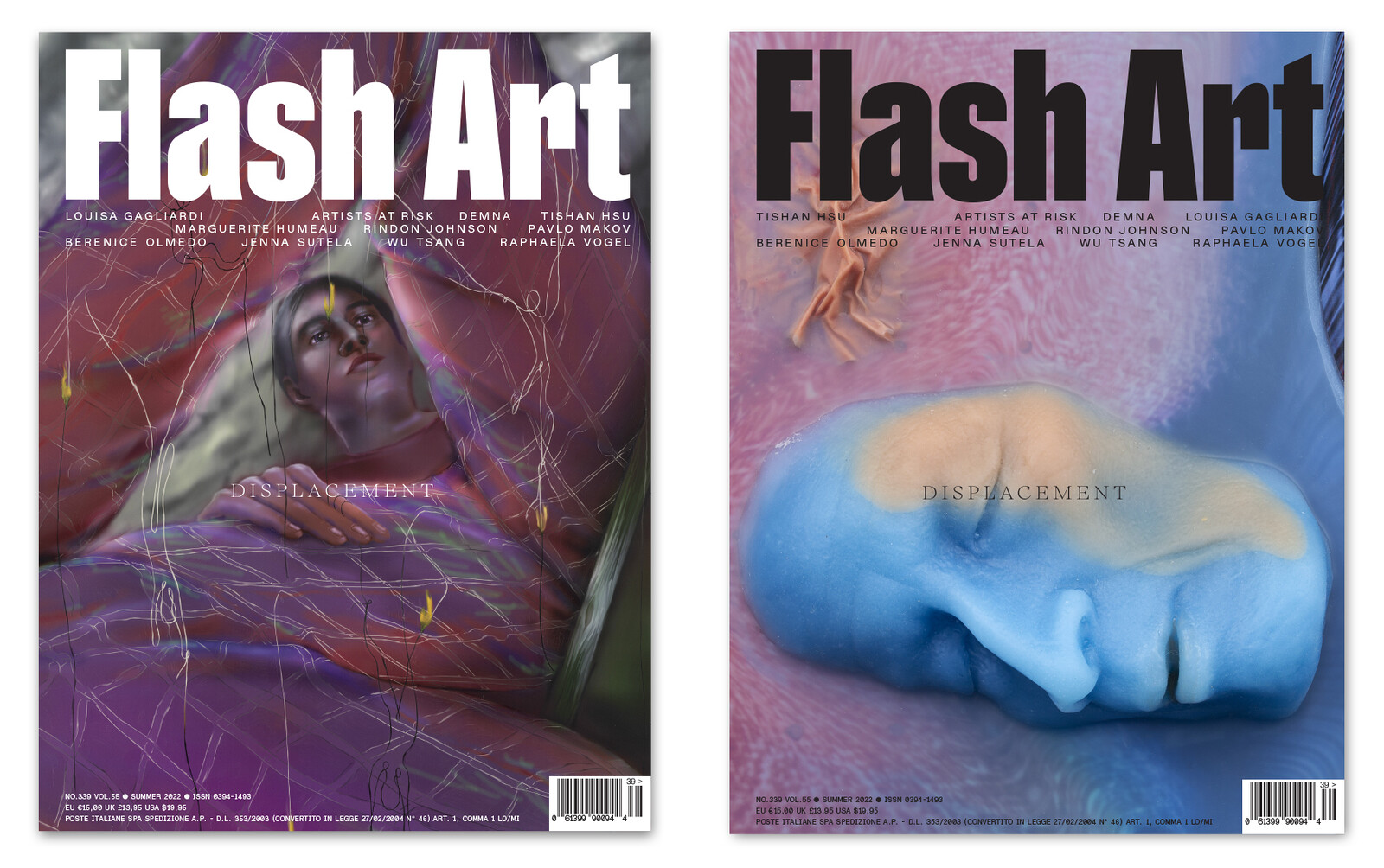In today’s art and culture, new configurations of the historical concepts of humanism and collectivity are far-reaching. “Not many of us know it, but we are all cyborgs,” says Giovanni Aloi in his reflection on “The Milk of Dreams,” in which the posthuman question is the central pivot of Cecilia Alemani’s theoretical-curatorial research. In this issue we’ve tried to trace a posthuman matrix in artist productions by considering the displacement of the human from its biological body. As with Alemani’s curatorial framework, this issue owes its construction to the influence of Rosi Braidotti, especially her latest book, Posthuman Feminism (2021), in which the philosopher defines the posthuman turn as a convergence between posthumanism on the one hand and post-anthropocentrism on the other, particularly their complex relationship and joint impact.
We have titled this summer issue DISPLACEMENT. In thinking about all the declinations the word can have with respect to a humanity increasingly in crisis, more than any other we have highlighted the disconnection from our corporeality as human beings and, following Braidotti, a widening gaze—from the bios (human) toward new zoo/geo/technological subjectivities—that has set in motion other categories of actors and complex networks of affective relations.
The cover stories in this issue are dedicated to Tishan Hsu and Louisa Gagliardi. The work of the former reflects expanding unitary conceptions of “identity” and its politics by recalibrating the expectations of technologically oriented art. The photographic technology Hsu uses creates “increasingly complex fields and effects that modulate with the flux of our media landscape,” as Franklin Melendez points out. Gagliardi’s work, as analyzed by Louisa Elderton, refers to an atmosphere of “opening random doors and observing whatever scene lurks behind them.” Both worldviews present a restlessness: Gagliardi’s resulting from a sense of dissatisfaction or unhappiness, and Hsu’s from an attempt to read “what is happening internally in this new interface we increasingly inhabit, between the body and technology.”
One might think that these attitudes are properly human, but instead we invite readers to consider knowledge and knowing not as prerogatives of anthropomorphic subjects but rather as things that take place in a world in which organic species and technological artifacts coexist. Throughout the issue, we offer a neo-materialist view of life that rejects any form of undifferentiated and flat ontology, choosing to relocate anthropomorphic subjects by subtracting them from any pretense toward exceptionality. At a time when we are buffeted by violent tensions and composite fluxes, we feel a sense of vulnerability and exhaustion that is gradually moving us away from universal and all-encompassing political solutions.
Also in this issue: Marguerite Humeau by Adriana Blidaru; Raphaela Vogel by Eleonora Milani; Berenice Olmedo by Jane Ursula Harris; Rindon Johnson in conversation with Isabel Parkes; Wu Tsang in conversation with Noam Segal; Demna by Charlie Robin Jones; A visual essay by Jenna Sutela; Letter from the City by Pavlo Makov; Artists at Risk (AR) in conversation with Frank Wasser.
Reviews
The Milk of Dreams: A Posthuman Revolution at the 59th Venice Biennale / Whitney Biennial 2022, Quite as It’s Kept Whitney Museum of American Art, New York / Barbara Kruger, Thinking of You. I Mean Me. I Mean You LACMA, Los Angeles / Dominique Gonzalez-Foerster, Alienarium 5 Serpentine Galleries, London / Charles Ray, Centre Pompidou and Bourse de Commerce—Pinault Collection, Paris / Heidi Bucher, Metamorphoses I Kunstmuseum Bern / Jackie Winsor, MAMCO, Genève / Zoe Leonard, Al río / To the River MUDAM, Luxembourg
The issue will be available at Art Basel; ArtMonte-Carlo; Zurich Art Weekend; Sculpture Garden Genève; and the 59th Venice Biennale.



